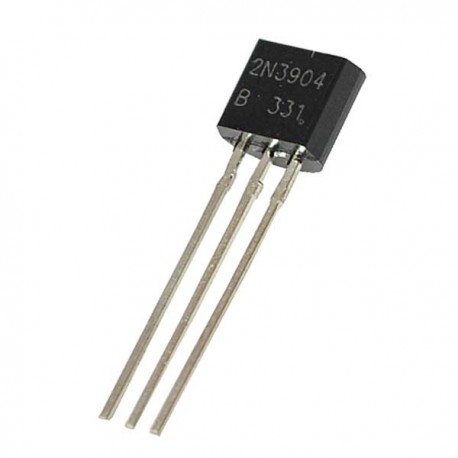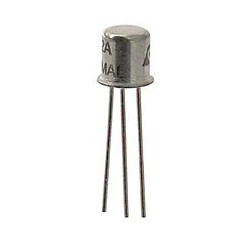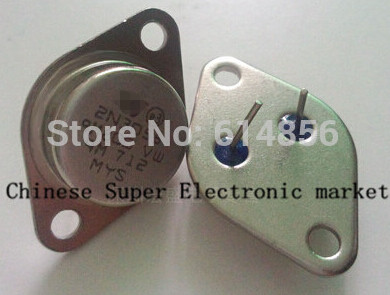

It's best to design so that your circuit will work over all possible variations of hFE (with your specified part) without any manual adjustments. You'll want to pay particular attention to the hFE changes with temperature if you want to do low distortion amplifiers because the hFE changes with temperature can cause large thermal 'tails' on the open-loop response. Often used in cost-sensitive applications. Transistors aimed at analog applications often have hFE bins that at are relatively narrow (typically about a 2:1 range) - for example an SS8050C has hFE between 120 and 200 under specific conditions. The gain value of the 2N3904 is 300, which controls the transistors amplification capacity. It also helps that hFE is typically drops at very low currents so battery drain etc is not impacted as badly as you might expect. Because the 2N3904 is an NPN transistor when the base pin is held at the ground, the collector and emitter are left open (reverse biased), and when a signal is applied to the base pin, the collector and emitter are closed (forward-biased). If you are just driving a base with a CMOS gate or MCU the voltage is usually < 100mV and the resulting current can be ignored. You may care about the maximum gain if there can be a bit of base current but usually you can say that if Vbe is less than (say 300mV) that the collector current resulting will be negligible over a normal temperature range (that voltage will be less if you have to operate at very high temperatures because hFE increases and the Vbe for a given base current decreases- a double whammy). If you are using the transistor as a simple switch you may not care about hFE (directly) at all, only the current required to saturate the transistor, which will be much higher than hFE for a Vce of 1V would predict. You can use the guaranteed numbers and extrapolate what the effects of temperature will be or interpolate for different currents.


(Pulsed gain is specified because they want to neglect the effects of self-heating) To see how it varies with temperature and current, typically, you can refer to the graph: If you hold it in your fingers during the measurement it will increase from the heating! So at 10mA and 1V Vce and 25 degrees C the DC current gain will measure between 100 and 300, guaranteed. Here is an example from the Fairchild data sheet: So my answer should only be taken as a rough estimate of what's out there.Īs pointed out, \$\beta\$ is the same as hFE, and it will be listed as the latter on a datasheet at a few currents and at some substantial Vce. Generally B is different for each unit manufactured and can also change if the operating conditions change(temperature, collector current, collector emitter voltage, etc). The value of B is usually given for a specific operating point that the manufacturer thought was relevant. The values of B in the Digikey database usually match the typical value given in the table in the manufacturer datasheet for each transistor. I used the values of B in the Digikey database to generate the above statistics. Given B for each of those part numbers we have the following statistics.ĩ0% of the B values fall within the range 25 to 750.Ĩ0% of the B value fall within the range 40 to 270. At a ratio of 100 times input to output, you can see how you can build a really strong amplifier in short order, with just a handful of components.As a general answer to what values of B are common out of all the BJTs commonly available right now One quick way to find out what's common would be to search for what's in stock at the major distributors, (Mouser, Digikey, Avnet, Arrow, etc).Ī search on Digikey for all currently stocked BJTs in active production gives 3723 unique manufacturer part numbers. You can then take the output of one transistor and feed it as the input to the next one, and so on, eventually multiplying the amplification as you need it. You have a few resistors here and there, but basically the circuit diagram is mostly a bunch of these 2N3904 NPN transistor components strung along together to create the increased amplifier effect.Įach transistor creates a certain amplification effect.

So what that means is that the rest of the circuit design is fairly simple. The transistor does most of the work for you. Take the amplifier mentioned in the article. The transistor is the real workhorse for a lot of audio components. I used to mess around with audio electronics some time ago. I think that, theoretically, you could probably buy a single IC chip that would do the job for you, rather than choosing to buy transistor components to get the same results. I would guess that in most modern applications you don’t really need to string along a whole bunch of transistors to get the same result.įor example, I know that IC chips can contain hundreds of transistors in them.


 0 kommentar(er)
0 kommentar(er)
